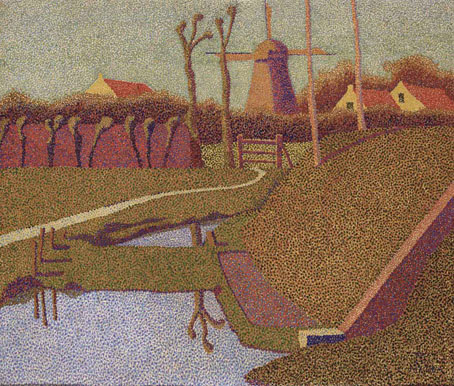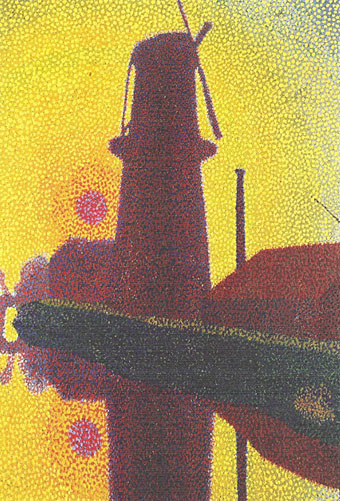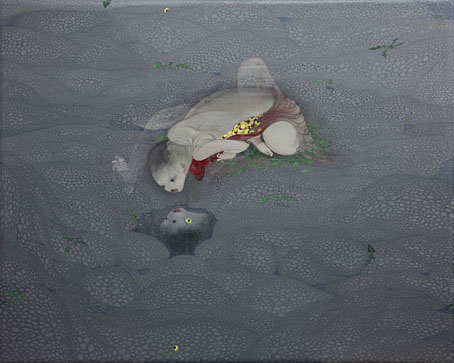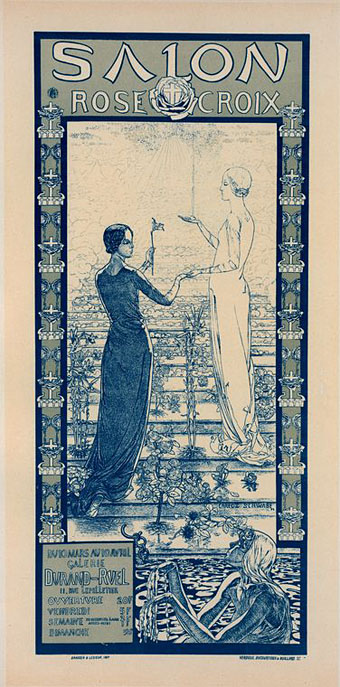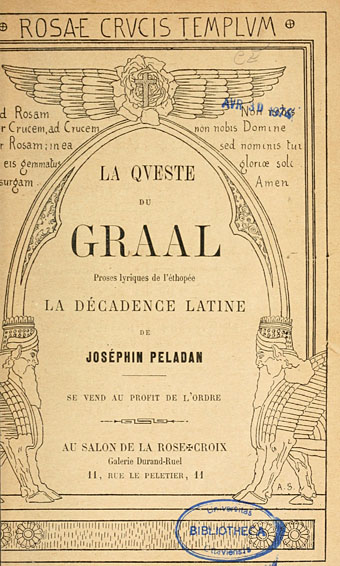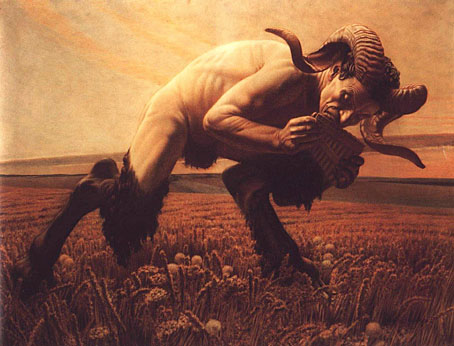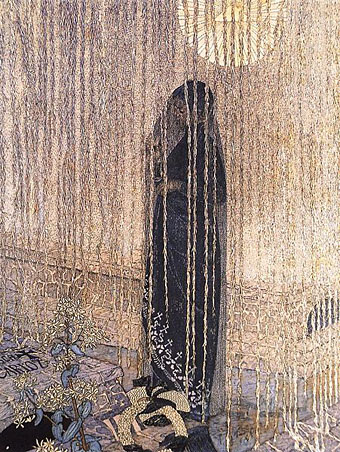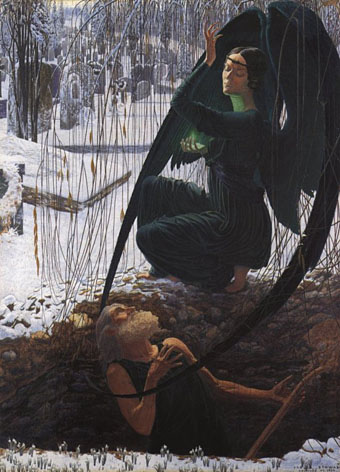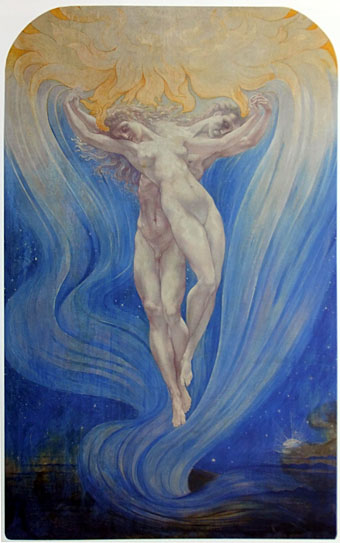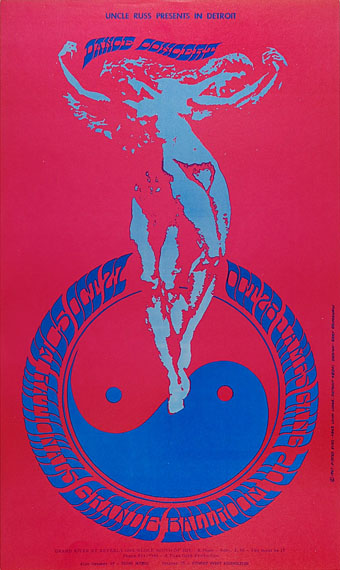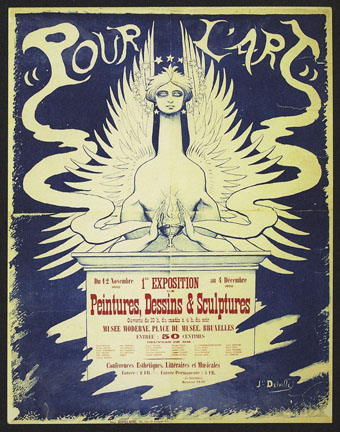Landscape with Mill (1894; Museum De Lakenhal, Leiden).
This week’s post is another by Sander Bink about a Dutch artist whose work may be unfamiliar to those outside the Netherlands. As before, Henk Bremmer was an artist whose work I hadn’t seen until now. My thanks again to Sander for the post.
* * *
Hendricus (Henk) Bremmer was a Dutch painter, art critic, collector and art dealer. Nowadays he is mostly known for his role in forming the collection of what has become the Kröller-Müller Museum. He was enough of an authority on Dutch Modernist art from the early twentieth century to be known as “de Kunstpaus”—”the Pope of the Arts”. Bremmer was an early and important advocate of Mondriaan’s work, but the Bremmer landscapes I will focus on here are much more Modernist than those being made by Mondriaan at about the same time. Although Bremmer’s paintings from the 1890s and from around 1900 are seen as early examples of Dutch pointillism, readers of this blog will probably appreciate them for their Symbolist qualities. They are usually not seen as such but to me the Symbolist affinities are quite clear. That Bremmer was acquainted with Symbolist theory is apparent from his being an avid reader of the French Symbolists and a great admirer of Huysmans’ À rebours.
Windmill (1894; private collection).
In the 1890s Bremmer was friends with Dutch (Decadent-Symbolist) writers and painters such as Henri Borel, Henri van Daalhoff, Jan Toorop and Johan Thorn Prikker. When Josephin Péladan, the High Priest of Symbolism, visited the Netherlands in 1892 he stayed with Bremmer and invited him to exhibit at his Rose+Croix shows in Paris. The exhibition never materialised but one can easily understand the mystical qualities Péladan must have appreciated in Bremmers paintings. Like many Dutch intellectuals of the period Bremmer was strongly influenced by Spinoza’s mysticism. But whatever the source of his art, the landscapes here depicted can be considered “Symbolist landscapes”, like those being painted in France by Alphonse Osbert or Charles Filiger.

